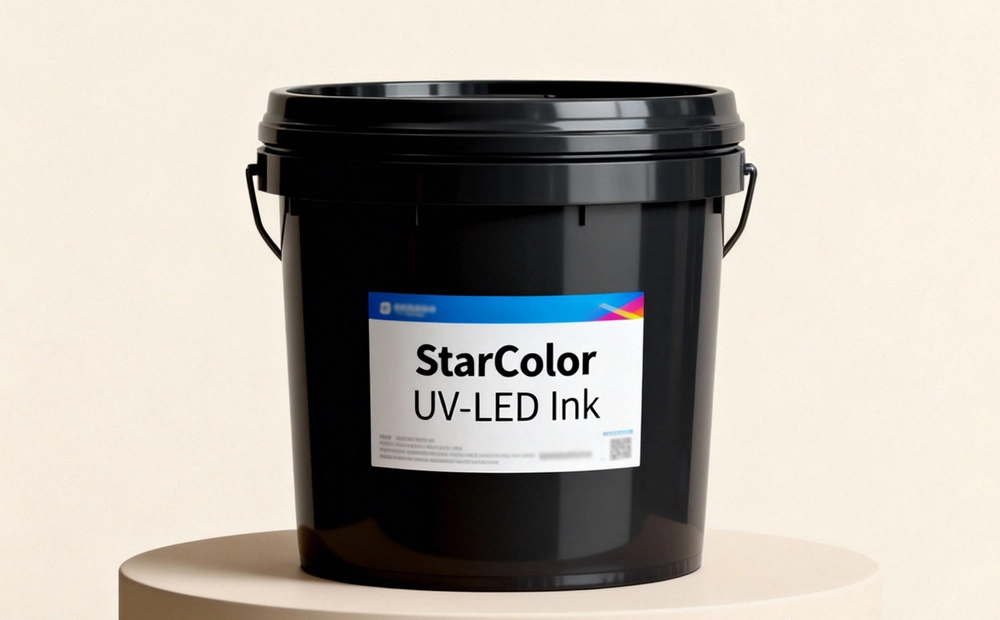How to Choose a Reliable UV Ink Manufacturer (Buyer's Guide:2025)
Date: Nov 26 2025 From: Star Color Views:
With the implementation of China’s new national standard GB 30981.2-2025, UV inks have continued to gain traction across food packaging, 3C electronics, automotive interiors, and more. The market size is expected to exceed USD 18.8 billion in 2025. However, industry concentration remains moderate—CR5 is only 41%—and manufacturers vary greatly in product quality, safety compliance, and technical capability.
For downstream printers, choosing a reliable UV ink manufacturer not only determines compliance and product quality but also has a direct impact on cost control and overall competitiveness. This guide summarizes key evaluation dimensions—compliance, technology, product adaptability, and supply-chain strength—to help buyers make informed decisions in 2025.
1. Compliance & Certification
With stricter enforcement of environmental and safety regulations, compliance has become the first and most critical filter when selecting a manufacturer. Reliable suppliers must demonstrate full-chain compliance—not just product-level compliance.
- Complete Certification Coverage: Products for food packaging must comply with GB 4806.14-2023 with VOCs ≤50 g/L. Export-oriented UV inks should meet EU REACH, FDA Food Contact, and low-migration requirements (overall migration ≤10 mg/dm²). Manufacturers should provide third-party test reports covering heavy metals and newly controlled substances.
- Production & System Certifications: Valid emission permits, GMP-standard workshops, ISO 9001, ISO 14001, and for advanced segments, ISO 22000 for food-contact production.
- Participation in Standards: Manufacturers involved in developing national/industry standards typically have higher foresight. Examples include companies leading ink and photoinitiator standards—these suppliers better anticipate regulatory changes.

2. Technical Strength
In 2025, UV ink technologies continue to evolve rapidly. LED-UV curing, low-migration formulations, and bio-based raw materials are becoming standard. Technical strength determines product performance, safety, and long-term stability.
- R&D Investment: R&D spending should be ≥3.8% of annual revenue, with national-level technical centers and an average of ≥5 patents per year—especially in low-migration photoinitiators and UV resin technologies.
- Core Technology Adaptability: Inks should fully support LED-UV curing (380–420 nm), cure within ≤0.3 seconds, and meet high-speed printing requirements. Food packaging inks must show proven low-migration performance.
- Raw Material Self-Sufficiency: Manufacturers with in-house production of key raw materials (resins, photoinitiators) are more reliable in cost stability and supply continuity.
3. Product Quality & Application Adaptability
A reliable UV ink supplier provides not only compliant products but also customized solutions tailored to specific printing processes, substrates, and application scenarios.
- Key Performance Indicators: Energy required: 60–120 mJ/cm² Adhesion: ≥4B Rubbing resistance: ≥1000 cycles (500 g load) ΔE color deviation: ≤0.6 Low-migration inks must pass food simulant testing and be odor-free.
- Application-Specific Adaptability: Suppliers should offer formulations for flexo, gravure, offset, and screen printing, suitable for substrates including PP, PE, paper, metal, BOPP, PET, and more. For example, StarColor low-migration UV inks support multiple food-packaging films and meet specialty needs (e.g., alcohol resistance for 3C products).
- Quality Control: A robust QC system should include at least five inspections from raw materials to finished products, supported by AOI optical inspection and batch-traceability systems. Defect rates should be ≤1%.
4. Supply Chain & Service Capability
In 2025, material volatility and geopolitical trade risks make supply-chain resilience and service capability key to reliable long-term cooperation.
- Production Capacity: Annual output ≥5000 tons, multi-site manufacturing, 72-hour delivery for standard products, 15-day delivery for custom inks, 24-hour response for urgent orders.
- Supply Chain Resilience: Multi-source procurement, long-term contracts with upstream suppliers, stock-prewarning systems to buffer resin and photoinitiator price fluctuations.
- Full-Cycle Technical Support: Pre-sales consultation, sample testing, on-site technical guidance during production, and post-sales troubleshooting within 48 hours.
5. Practical Selection Process & Risk Avoidance (2025)
- Define Key Requirements: Clarify printing process, substrate type, application scenarios, VOC limits, production capacity, and compliance needs.
- Shortlist Manufacturers: Use exhibitions, association recommendations, and supply-chain references. Prefer companies with ≥5 years of operation and no record of environmental penalties.
- Multi-Dimensional Verification: Request certifications and test reports, conduct small-batch trials, and inspect manufacturing and R&D sites if necessary.
- Contract Specifications: Define quality standards, delivery times, warranty provisions, return/exchange policies, and raw-material price-adjustment mechanisms.
Conclusion
Competition in the 2025 UV ink market has shifted from basic product quality to a comprehensive battle of compliance, technology innovation, product precision, and supply stability. Buyers should avoid choosing based on low price alone and instead prioritize manufacturers with robust compliance systems, strong R&D, reliable quality, and stable service capabilities.
Through systematic evaluation and on-site verification, buyers can build long-term partnerships with high-potential UV ink manufacturers, reduce operational risks, and strengthen their competitive edge during industry-wide environmental upgrading.
 RU
RU
 EN
EN
 CN
CN

